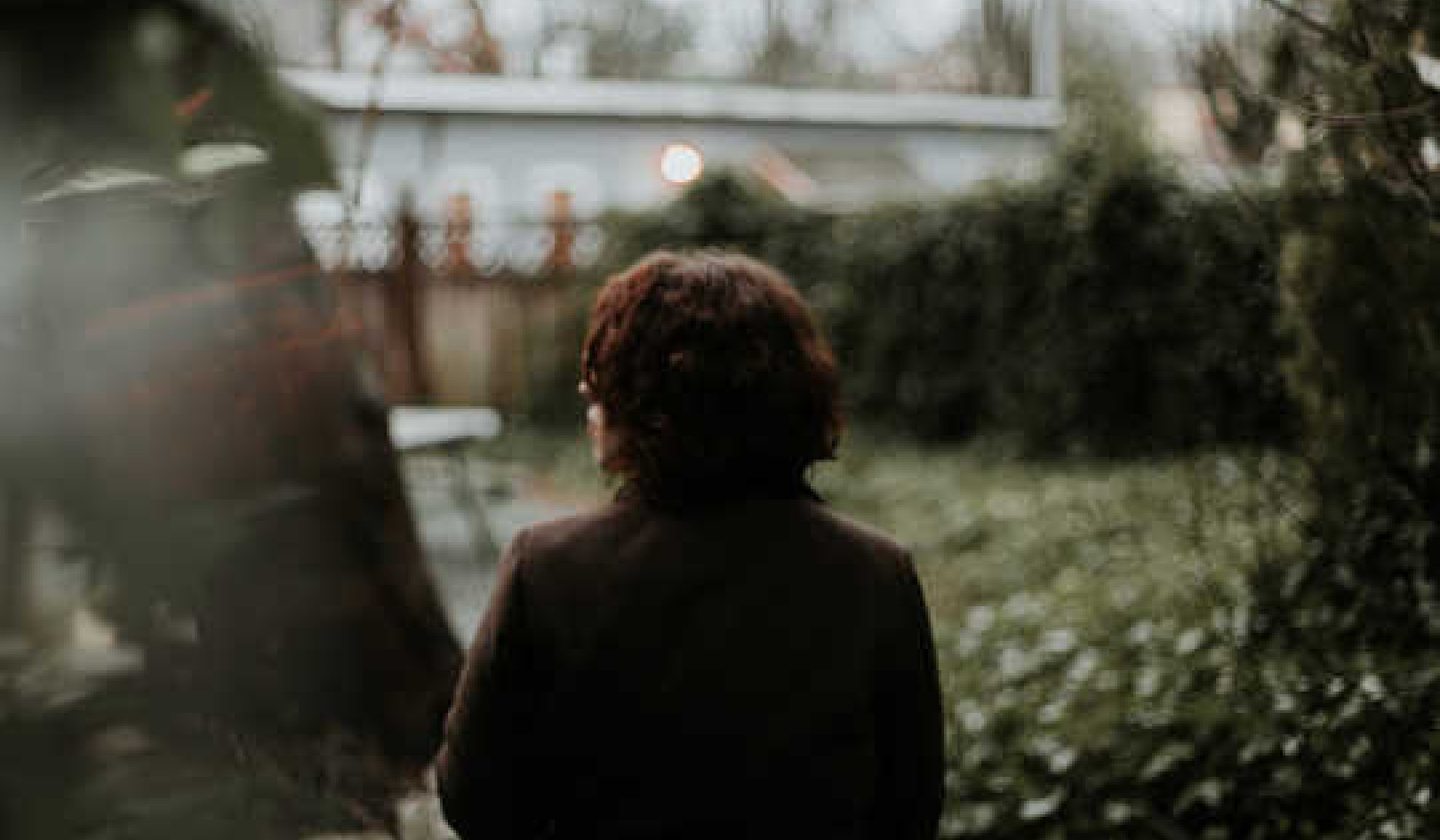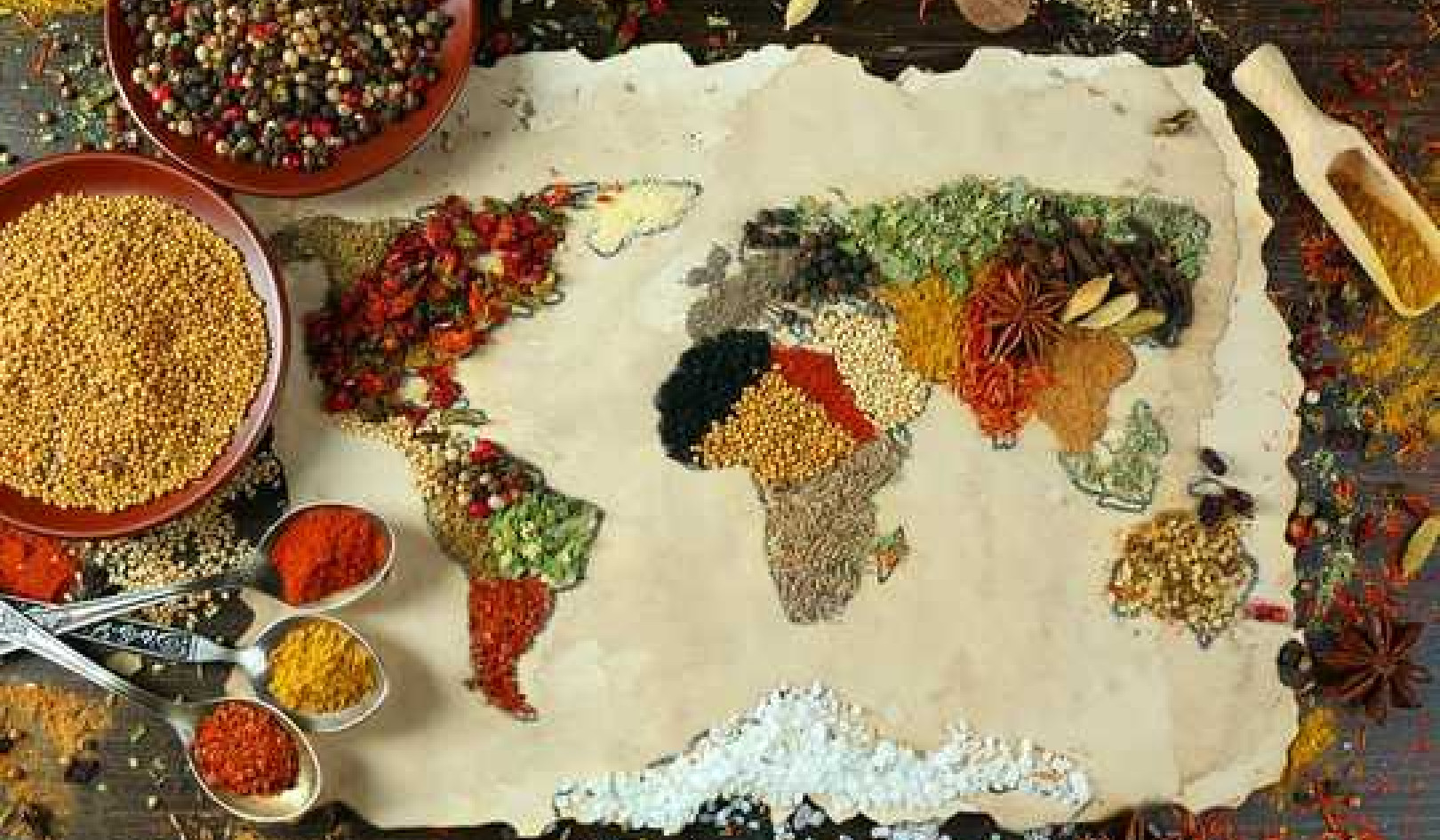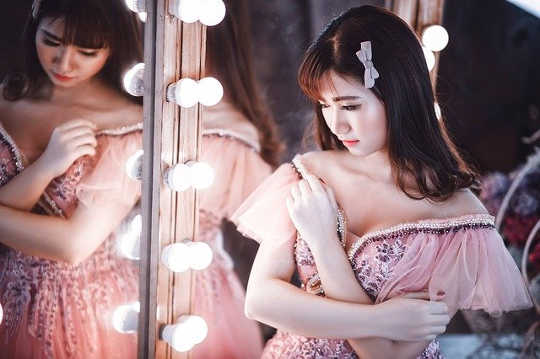
Image by N-Y-C
Maybe you already know a bit about the simple and effective form of energy medicine named the Art of Jin Shin. Though the practice has many thousands of adherents all around the world—from my New York City–based clients, to the inmates at a jail in the Indian province of Gujarat, to several hospital programs in the US and the UK, and to the many men, women, and children who have been helped by Jin Shin in its birthplace of Japan—Jin Shin Jyutsu has not yet become a household name.
Initially spread throughout Japan through the hands-on work of Jiro Murai, the founding father of Jin Shin, in the early to mid nineteen hundreds, then more widely through his disciples, most notably Mary Burmeister and Haruki Kato, the energetic healing modality was first introduced to the American reader more than twenty years ago by the book The Touch of Healing by Alice Burmeister and Tom Monte. Since that time, much has changed and evolved in the mainstream conception of health, with integrative healing and medicinal practices such as yoga, meditation, acupressure, acupuncture, Reiki, craniosacral therapy, and reflexology (to name just a few) becoming more and more popular in the West.
In comparison to its more widely known brethren, the Art of Jin Shin has remained a relatively well-kept secret. With this book, it is my intention to introduce a wider audience to its healing and restitutive powers.
Simple Self-Healing
With the modern world perpetually running at a breakneck pace, there has never been a better moment to spread the word of simple self-healing. Technology has become an inescapable part of our daily lives, and many of us find ourselves seeking a more integrated relationship between our body, mind, and spirit.
Jin Shin is an art that allows for connection, limitless growth, and exploring the creative artist in you. Coming from a family of Holocaust survivors with a legacy of historical pain, loss, and generational suffering, I found that my practice and study of Jin Shin opened my heart in ways I had not necessarily expected.
Gifting me with an awareness of my relationship to a higher energy and consciousness, the philosophy and practice remind me of the presence of something bigger than myself, connecting me to an expansive universal energy and reminding me of the wholeness of my soul. Putting us in touch with our innate wisdom and bringing us to a place where our intuition can reveal itself, the Art of Jin Shin is both vast and complete.
When I had my first session with my most influential teacher, Philomena Dooley, I had little knowledge of the immensity of the art I would eventually encounter. I did, however, have an immediate premonition that I had found what would come to be a lifelong path for me. Twenty years after that first encounter, another important teacher with whom I had the good fortune to study, Pamela Markarian Smith, passed on a legacy to me as she appointed me to lead Jin Shin Institute just a few years before she passed away.
The core of the institute’s work consists of education as well as our wellness center, with a certification program for novice and seasoned practitioners as well as opportunities to become a certified teacher. Presenting the Art of Jin Shin in all of its breadth is among our foremost goals, which is why we have made certain modifications to the terminology in order to reach a wider audience. For instance, those of you who have familiarity with the modality will know it as Jin Shin Jyutsu. In order to avoid a common source of confusion, we changed “Jyutsu” to its English translation, “art,” removing echoes to a martial art.
As all Jin Shin practitioners know, the healing practice we refer to as an “art” can encompass a lifetime’s worth of study and freedom to explore our own creativity. There are many paths leading to one goal. It is in my awareness at this moment that I am putting the practice into simple words so that it can be understood and used by many. If you decide to continue your exploration into the Art of Jin Shin, you will find endless layers within the practice, along with links and similarities to other disciplines such as astrology and numerology.
On the other hand, Jin Shin can be as simple as taking a breath and holding a finger. Both ways of practicing are equally wonderful and complete, neither one superior to the other. That is part of the beauty of Jin Shin, which can be practiced on all levels.
What Is It Good For?
You can use The Art of Jin Shin to alleviate common ailments, such as bringing down your baby’s fever or helping yourself or your partner with a headache, or you can use it as a regular daily tune-up for general wellness. Most of my clients make Jin Shin self-help a part of their daily routines, many of them practicing before they get out of bed in the morning. Other great times to practice your Jin Shin include middle-of-the-night wake-ups, downtime while waiting for appointments, or couch time while watching movies or TV.
You never know when the opportunity will present itself. My college-aged son, who frequently calls me from school for some quick Jin Shin advice, phoned breathlessly a few weeks ago to tell me that a kid had collapsed outside his dorm. I gave him instructions for a simple hold and told him to stay with it until EMS arrived. A few minutes later I got a one-line follow-up text message: “I did it!” The young man was okay, and Tyler had had the opportunity to be there for him by applying some simple Jin Shin.
As my teacher likes to say of Jin Shin’s library of self-help quickies and re-calibrations: “Don’t leave home without it!” And since this simple energy work involves no tools other than your own two hands, you will always have everything you need in order to relieve your aches and pains or set yourself up for a great day.
The Jin Shin Effect
The first time I encountered the Art of Jin Shin, I knew instantly that the course of my life was going to change. My second year in New York, a friend who suffered from multiple sclerosis went to see a woman named Philomena Dooley over in New Jersey for a session of a mysterious Japanese healing art. A renowned instructor and master practitioner, Philomena had a nursing career before she discovered Jin Shin in the late 1970s through health problems of her own.
When he came back, he handed me a little wire-bound self-help book and said, “I think this is what you are meant to be doing.” Based on ancient Eastern principles of energy medicine and holistic healing, the modern day healing art uses nothing more than the gentle touch from a practitioner’s hands to remove energetic blockages that cause physical and emotional pain and disease.
As far as I knew, I was still pursuing my lifelong dream of being a dancer in New York. My friend, however, sensed something that I would soon see for myself. I instantly embraced Jin Shin’s profoundly simple, holistic philosophy.
As Westerners, we tend to think that ailments have a single cause, and that one person with fifteen ailments might require as many different kinds of treatments or prescriptions. In contrast, many Eastern philosophies suggest that everything, from energy in the body to events in the world, moves in a continuous cycle, with each individual part being connected.
Looking at the body from an energetic point of view makes sense of even very disparate-sounding dysfunctions—like bunions and lung issues.
Simple and Infinitely Complex
The practice itself is both simple and infinitely complex. What struck me right away was how much you can learn about the body just by feeling and looking. As Philomena talked us through her process, demonstrating on a volunteer, we saw transformations take place with our very own eyes. A raised shoulder, visibly out of line with the rest of the body, would sink down into the table as she gently held on to the underside of the opposing knee. Pigeon toes would gradually turn outward as she held the volunteer’s upper thigh, and cupped hands would resolve with a release of the upper back. Philomena guided us through body readings, training our eyes to notice congestions within the body—a rolled-in knee, a locked shoulder, a distended abdomen.
I felt like a newly awakened being. The career I had trained for all my life flew out the window during that seminar. Soon afterward, I asked Philomena whether she would be willing to continue training me privately, and I became one of the few lucky people to benefit from her extended instruction and mentorship.
In short order I was able to give comprehensive treatments myself, at times using specific protocols recommended by Philomena, and with astonishing results. I practiced as much as I could on whomever I could get my hands on, mainly dancers I knew from company and class.
Sometimes the practice is used for maintenance, to alleviate conditions that are a natural by-product of the aging process or to support clients experiencing serious illness. Sometimes I find myself using it as a form of first aid. The Art of Jin Shin is vast. I have been practicing for nearly thirty years now, and I learn something new with every client.
Mapping the Fingers
What is your “emotional attitude”? Invented by Mary Burmeister to describe our prevailing emotional states, the term refers to the shifting emotional winds that disrupt our equilibrium, throwing our thoughts and our energetic rhythms off balance. The anxiety-provoking email that poisons an entire day, or the decades-old trauma that still holds us back in ways big and small—these are familiar examples of the ways in which our emotions can fester and accumulate long after an inciting incident has come and gone.
Most of us are already aware of how deeply our emotions affect our lives. Among Mary Burmeister’s many valuable contributions to the Art of Jin Shin was the insight that our negative emotional attitudes, whether changing or fixed, are the cause of all “dis-ease,” the energetic precursor for disease. Mary’s insight has been upheld by modern medicine, in study after study showing the negative effects of emotional stress on the human body.
Working to map the emotional attitudes on the body, she delineated them into five categories: worry, fear, anger, sadness, and “trying to.” The first four types are self-explanatory, while the last may refer to both inauthenticity and excessive effort. Each of the attitudes can be harmonized by holding a specific finger or thumb. Read on to learn how.
HARMONIZING THE EMOTIONAL ATTITUDES
Assisting the body with any healing project while also harmonizing specific organ functions, the finger holds are a wonderful place to start your journey into self-care with Jin Shin.
Like a tree, each finger can be divided into three parts—the roots, the trunk, and the harvest. You can either hold the whole length of the finger, or treat each part separately.
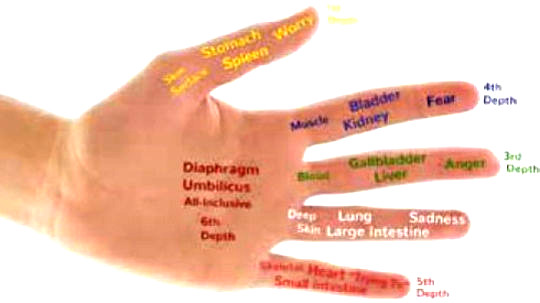
A powerful healing tool, the hand is a multidirectional conduit for the energy of Jin Shin.
Each section of the finger harmonizes a different part of the body. The top of the finger, or harvest, helps the chestline, including the lungs and the heart—a vital area for emotions and other intangible aspects of the human condition. The middle of the finger, or trunk, helps with waistline projects, including stomach, spleen, liver, and gallbladder—an area that relates to our understanding of self and our earthly desires, such as money. The bottom of the finger, or roots, harmonizes the hipline—representing the earth, our harvest and abundance. Finally, the palm of the hand is where all organ functions come together. Attending to the palms will help to reenergize the body along with the umbilicus and diaphragm energy.
Choosing the hand (right or left) with which to begin depends on your preference or mood, or whatever is most comfortable for you—perhaps your dominant hand. Attending to the fingers on the right hand can help with daily stress and the category we call “environmental projects”—energetic blockages resulting from stressors in the environment such as diet or lifestyle or even weather changes.
The fingers on the left hand will help long-standing and/or chronic projects, such as earlier trauma or lingering illness, as well as hereditary issues. The backs of the fingers help us with our inhale, and the palm side helps with the exhale. Gently hold for three breaths, or as long as feels comfortable.
Steps 1 through 6 (see descriptions below:
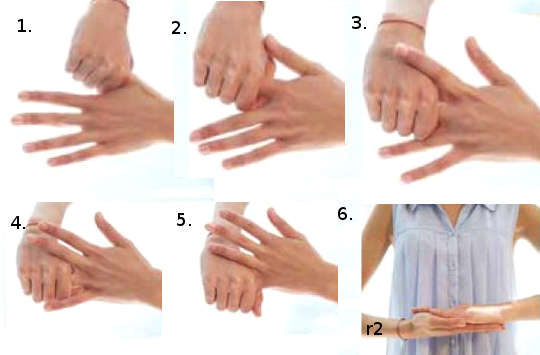
1. Place right fingers and thumb around left thumb.
2. Place right fingers and thumb around left index finger.
3. Place right fingers and thumb around left middle finger.
4. Place right fingers and thumb around left ring finger.
5. Place right fingers and thumb around left little finger.
6. Place palms together.
As you explore Jin Shin’s simple and gentle techniques for energetic rebalancing, I hope you will discover the potential for increased health, balance, and vitality that Jin Shin has to offer.
©2019 by Alexis Brink.
All Rights Reserved. Excerpted with permission.
Publisher: Tiller Press, an imprint of Simon & Schuster.
Article Source
The Art of Jin Shin: The Japanese Practice of Healing with Your Fingertips
by Alexis Brink Balance your body, mind, and spirit and heal yourself with your own hands using this clear, step-by-step illustrated guide to the practice of the ancient Japanese healing art of Jin Shin—written by a trained expert with nearly three decades of experience. The Art of Jin Shin explains all the basics of this healing art and provides you with the knowledge you need to practice it on yourself—with exercises ranging from simply holding a finger for a few minutes to spending twenty minutes to harmonize a specific circulation pattern. (Also available as an e-Textbook, an Audiobook, and a Audio CD.)
Balance your body, mind, and spirit and heal yourself with your own hands using this clear, step-by-step illustrated guide to the practice of the ancient Japanese healing art of Jin Shin—written by a trained expert with nearly three decades of experience. The Art of Jin Shin explains all the basics of this healing art and provides you with the knowledge you need to practice it on yourself—with exercises ranging from simply holding a finger for a few minutes to spending twenty minutes to harmonize a specific circulation pattern. (Also available as an e-Textbook, an Audiobook, and a Audio CD.)
For More Info and to Order this book.
About the Author
 Alexis Brink is the president of Jin Shin Institute in New York City and has been a practitioner of the Art of Jin Shin since 1991. She is a Licensed Massage Therapist and interfaith minister and has taught self-help classes and workshops in NYC as well as in different countries for many years. She has taught Jin Shin in hospitals to nurses and to teachers and their students in the public school system. TheJin Shin Institute under Alexis' guidance is offering a comprehensive curriculum to the new generation of practitioners and teachers. Visit JinShinInstitute.com for more information.
Alexis Brink is the president of Jin Shin Institute in New York City and has been a practitioner of the Art of Jin Shin since 1991. She is a Licensed Massage Therapist and interfaith minister and has taught self-help classes and workshops in NYC as well as in different countries for many years. She has taught Jin Shin in hospitals to nurses and to teachers and their students in the public school system. TheJin Shin Institute under Alexis' guidance is offering a comprehensive curriculum to the new generation of practitioners and teachers. Visit JinShinInstitute.com for more information.


























